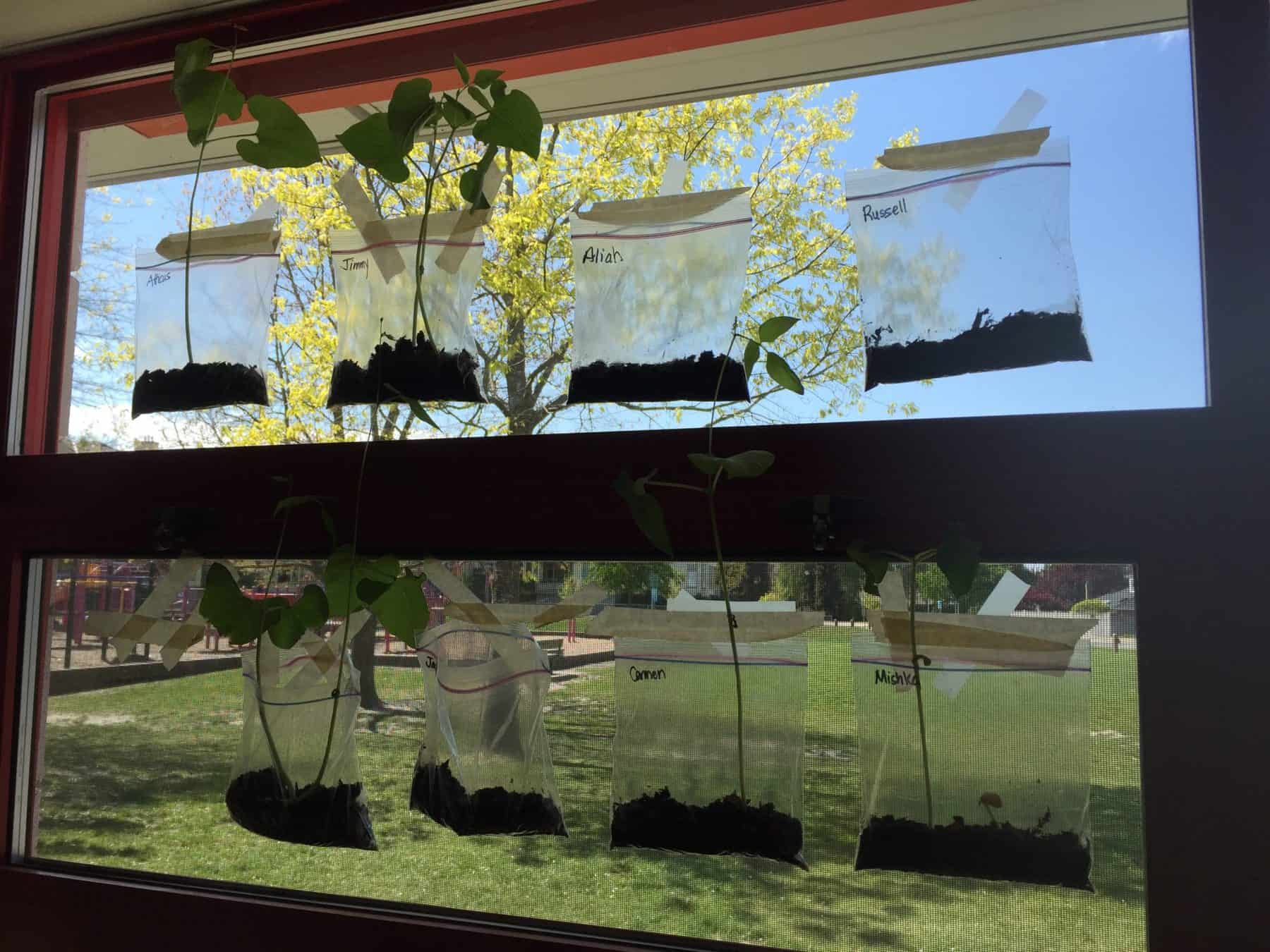- filed under: School Garden Basics, Science Outdoors, Seasonal Outdoor Learning
What Seeds Need To Grow: A Seed Inquiry
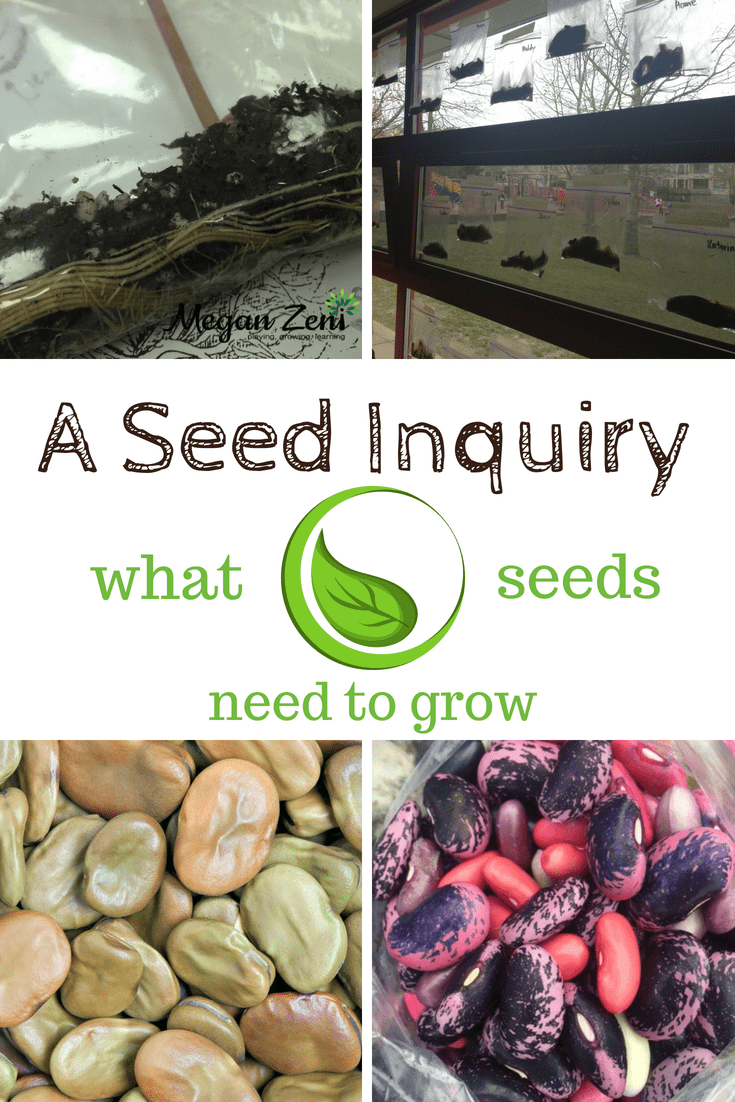
Seeds are a fascinating lens through which a huge amount of curriculum can be explored. From mathematical routines like ‘which one doesn’t belong’ to sorting by attribute, to understanding adaptations and the needs of living things, a seed inquiry provides an entry to complex understandings, and a bridge to meaningful cross-curricular learning inside and outside the classroom.
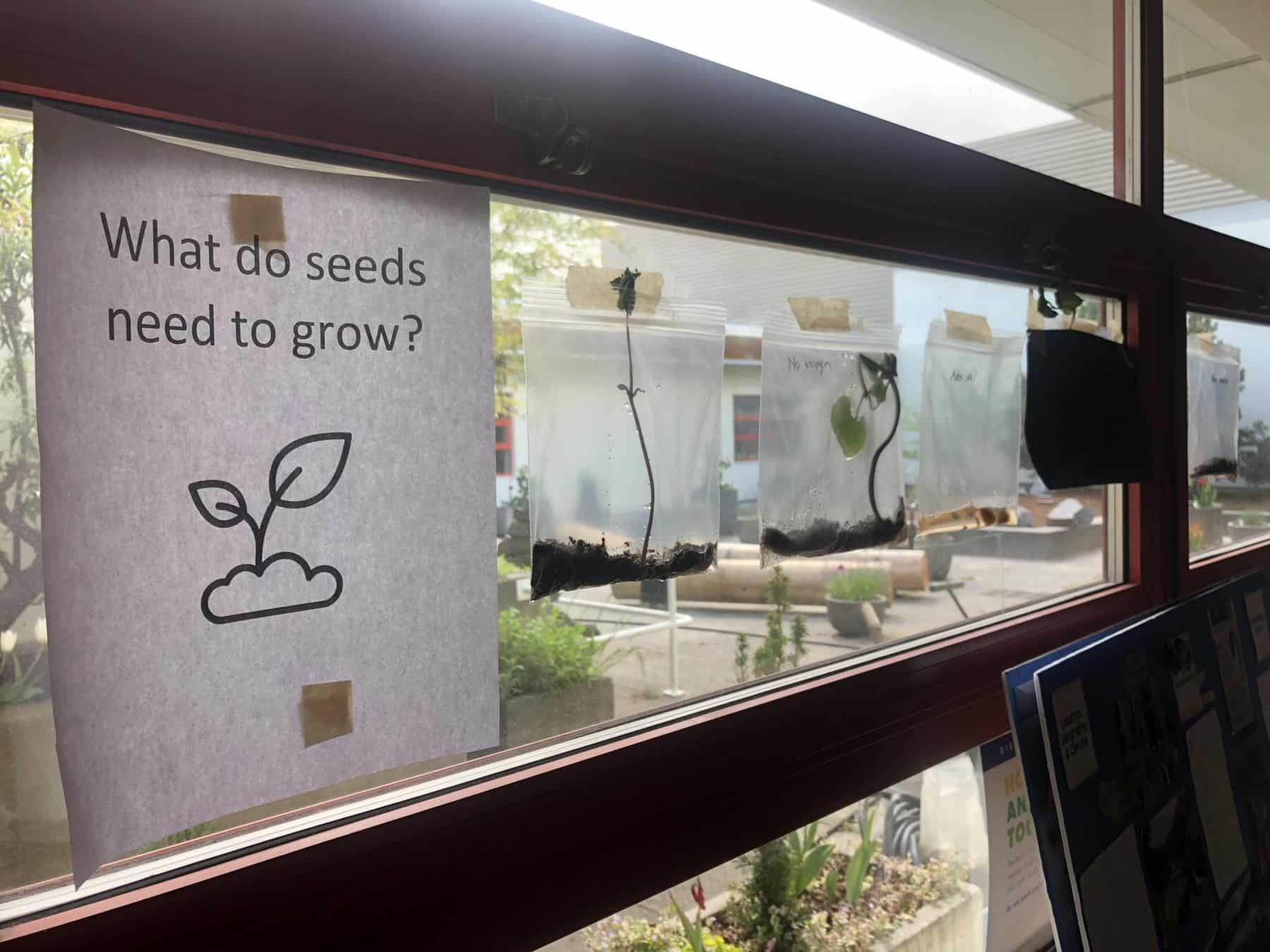
Seed Inquiry Materials required:
- 5 clear plastic baggies
- starting soil or paper towel
- pole bean seeds (any dried seed will do)
- a window with natural light
- masking tape
- a piece of dark construction paper (or use a bit of black garbage bag)
Optional materials
- Life Cycle Of A Green Bean Plant Model (link to amazon.ca)
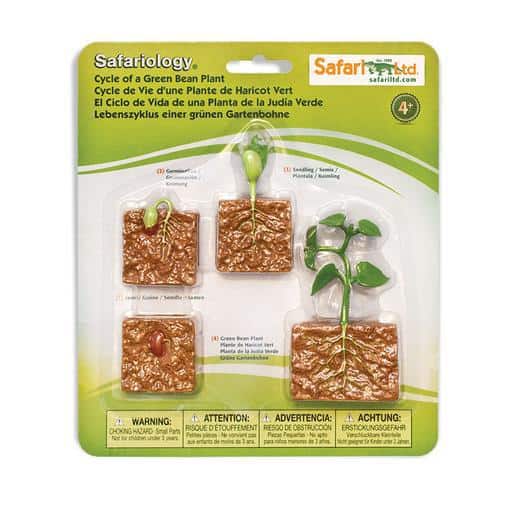
Seed Inquiry Process:
How to Begin
Begin by asking your learners what seeds might need to grow. Sometimes it can help to have young children think about what humans need to grow. Once you have established that living things need food, oxygen, and water, you can talk about how humans have different needs than plants – (children need sleep to grow, while plants get energy to grow from the sun) you can then label each baggie with an essential basic being denied for seed germination.
Labels
Label baggies 1-4 ‘no soil’, ‘no water’, ‘no sunlight’, and ‘no oxygen’ and the fifth baggie will be the control with everything provided for seed germination.
I usually place two seeds in each baggie to ensure the experiment doesn’t flop because of poor seed quality. Pole beans work best, in my experience. You can buy them online here.
Prepare Your Seed Inquiry
Add a small amount of starter soil to all baggies, except the ‘no soil’ bag. (This experiment also works with moist paper towels instead of soil) – I use soil to simply avoid a bunch of kids asking me why are we growing them in paper towels, if they need soil! You could also dish a bit up from your yard)
Add water to all baggies, except the ‘no water’ bag. Zip up the baggie for the ‘no oxygen’ bag. And encase the ‘no sunlight’ bag in a folded piece of black construction paper. Attach one side of all baggies to the window with masking tape, leaving them open for plant growth, watering and oxygen availability.

Observe the bean growth over time. You can download an observation page to record your findings here: How do seeds grow observation sheet.
Encourage Children to Draw the Stages of Plant Growth
Children can label the stages of plant growth: seed, germination, seedling and mature plant. Encourage your learners to draw like a scientist. While you are waiting, look at books or videos online to learn more about the germination process. Here are a few good videos to watch:
Wonderopolis- How do seeds sprout?
So Many Questions to Ask
Once the beans are growing well, they can be removed from the window and root growth can be observed closely. There are so many questions that will arise! Why are there hairs in the roots? Why are the roots growing across the baggie?
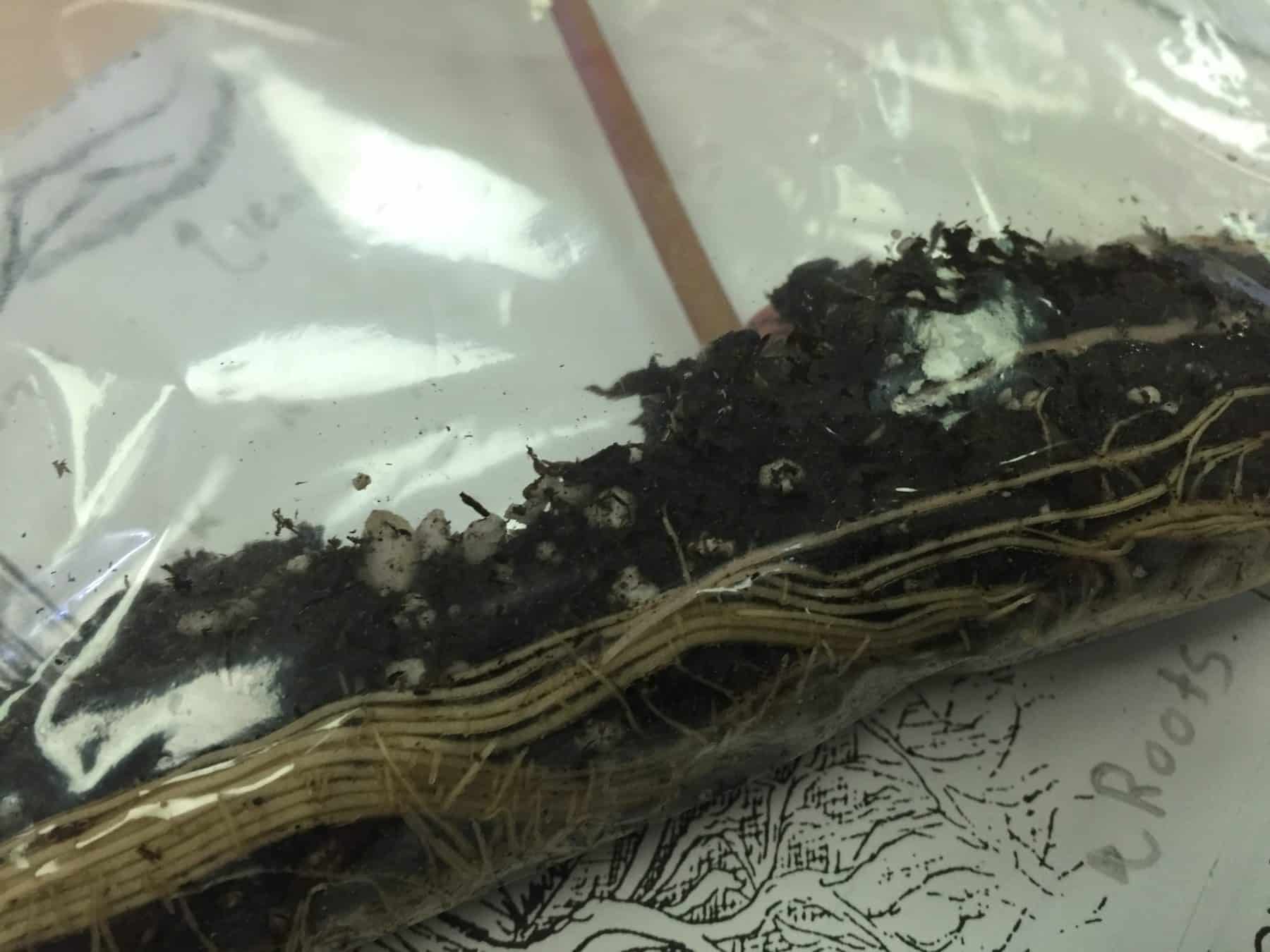
Connecting Seeds to Scientific Inquiry:
The best part of this inquiry is inviting students to predict and make a hypothesis on which seeds will or will not germinate.
The truth is, most seeds are resilient and can germinate in all sorts of growing conditions. The only bean seeds in this experiment that will not germinate at all are the ones that lack water, which can lead to an whole new inquiry on the importance of our water cycle! Links to grade specific BC Science Big Ideas specific to this experiment are highlighted below:
Kindergarten
Plants and Animals Have Observable Features
- what are your basic needs?
- what basic needs do plants and animals have in common?
- how do the different features of plants and animals help them meet their basic needs?
Grade One
Living things have features and behaviours that help them survive in their environment
- how do local plants and animals depend on their environment?
- how do plants and animals use their features to respond to stimuli in their environment?
- how do plants and animals adapt when their needs are not being met?
Grade Two
Living things have life cycles adapted to their environment
- why are life cycles important?
- how are the life cycles of local plants and animals similar and different?
- how do offspring compare to their parents?
Water is essential to all living things, and it cycles through the environment
- why is water important for all living things?
Grade Four
All living things sense and respond to their environment
- how do living thing things sense, respond and adapt to stimuli in their environment?
Curricular Competencies
Under the Learning Standards, Curricular Competencies are well aligned with any scientific experiment. These include the skills of:
Questioning and Predicting
Planning & Conducting
Processing and analyzing data and information
Applying and innovating
Communicating
Recommended Books for Seed Inquiry:
The following books are recommended for their clarity on seed growth and plant life cycles. Clicking on these links will take you to Amazon.ca
From Seed To Plant by Gail Gibbons
A Seed Is Sleepy by Dianna Hutts Aston
One Bean by Anne Rockwell
Related Post: Best Books For Understanding How Seeds Travel
What Seeds Need To Grow
Once your bean seeds have germinated, you can take them outside to continue growing. That said, in my experience, beans do not transplant well once they have germinated.
We often take ours out and try to plant them, but from experience, you’ll likely need to over plant the area with plenty of new bean seeds to get the growth you are looking for. Besides, the point of this experiment is really to slow down and take a good look at how seeds germinate with a window to the activity and growth that is normally hidden by the soil. If you want to, you can have your child take the plant apart and really explore the different parts of the plant with a magnifying glass or microscope, if you have one.
Learn More
I’ve curated some other great ideas on Pinterest for new and engaging ways to connect children, curriculum and nature! Join me here:

